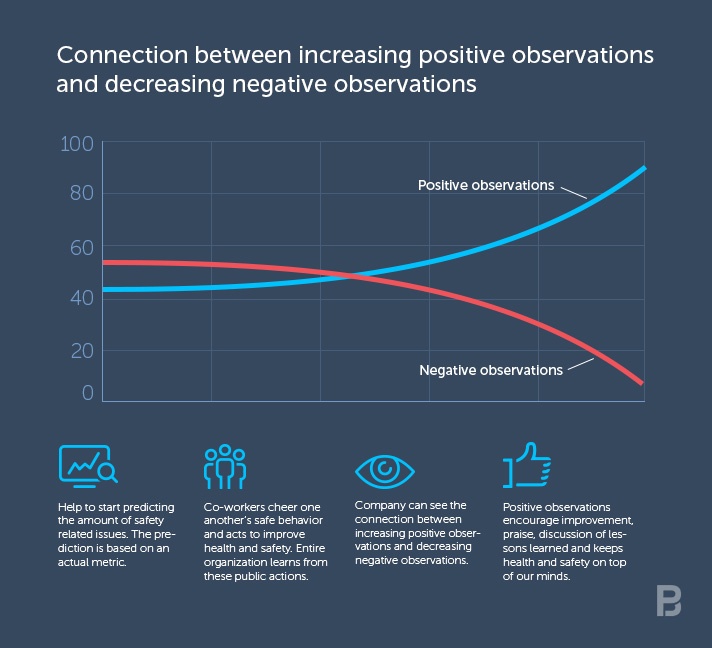When we talk about occupational health and safety, we tend to think about the negative aspects such as accidents, injuries, fatalities or occupational diseases. Various types of initiatives, policies and training are implemented in order to avoid such events. However, the focus still tends to remain on fear and concern instead of the positive sides of health and safety. Therefore, a question arises, what is the ultimate goal of health and safety after all?
There's always room for praise
Many companies today tackle the topic by encouraging employees to report near misses and observations of dangerous or risky behaviour. And indeed, those are many times the cause of serious incidents based on the famous workplace safety theory by Herbert William Heinrich. We agree that it’s better to have near misses and observations of risky behaviour rather than accidents. But is it optimal to encourage staff to seek more and more dangerous behaviour and observations of risks? Does this tell that the organisation has reached a culture of safety excellence?
In this blog post, we’d like to suggest one solution that is not as much implemented as it should be - the habit of reporting positive observations. It’s a habit that every company can move towards. In an organisation where a great safety culture already exists, it is likely that co-workers cheer one another’s safe behaviour and acts to improve health and safety. Why not make these actions public and report them so that the entire organisation can learn from them? There’s always room for positive notions and praise, even in occupational health and safety.

Positive observations can be measured
In many industries, there’s a set goal of zero accidents or zero injuries, which sounds like a great plan at first. But the problem lies exactly right there. The mindset and focus are on accidents and injuries, the negative aspects of health and safety. Even if a company manages to reach the presumably difficult goal of zero accidents, it doesn’t guarantee the same result for the next year. It doesn’t actually tell anything about the future, only about the past. In other words, the company is relying on lagging indicators. Lagging indicators are metrics that count events that already took place - the number of injuries, accidents etc. They portray the past but don’t predict the future.
Contrary to lagging indicators, the leading indicators are created to proactively measure trends and predict future safety issues. Leading indicator is a metric that is based on positive observations which means that everyone in a company is asked to report the improvements they notice. Examples could be the increased use of safety equipment, more frequent visits of a guard in a grocery store, or easier access to reporting software. All these positive observations can be measured. In the end, the goal is to see the comparison and the relation between the amount of negative observations (injuries, fatalities etc.) and positive observations (improved equipment, safety visits etc.)

When a company can see the connection between increasing positive observations and decreasing negative observations, they can start predicting the amount of safety related issues. The prediction is not based on guesses or hope but on an actual metric.
The ultimate goal
So, what is then the ultimate goal of health and safety? By searching Google for the ‘goal of health and safety’ we get 340 million results with thousands of different goals, which is to say that the answer is not simple. Nonetheless, for an organisation to have a strong health and safety culture, there must be habits throughout the organisation to reinforce it. One of the most fundamental habits in occupational health and safety is incident and observation reporting whether the observations are positive or negative. Observations encourage improvement, praise, discussion of lessons learned and keeps health and safety on top of our minds, which creates a positive loop for more observations. Is your organisation already reporting positive observations of health and safety? They should, as these observations are the seeds of change the propel into competitive advantages.
Are you familiar with Metrics and Safety KPIs? Download our FREE guide and dig into the subject:

We are building the world's first operational involvement platform. Our mission is to make the process of finding, sharing, fixing and learning from issues and observations as easy as thinking about them and as rewarding as being remembered for them.
By doing this, we are making work more meaningful for all parties involved.
More information at falcony.io.







